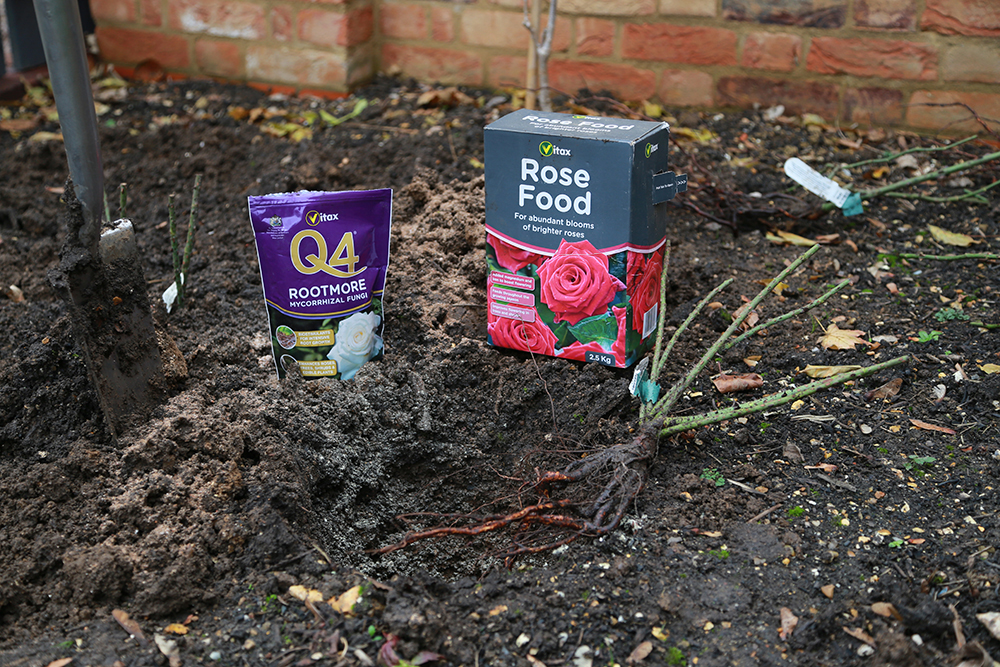Planting Roses
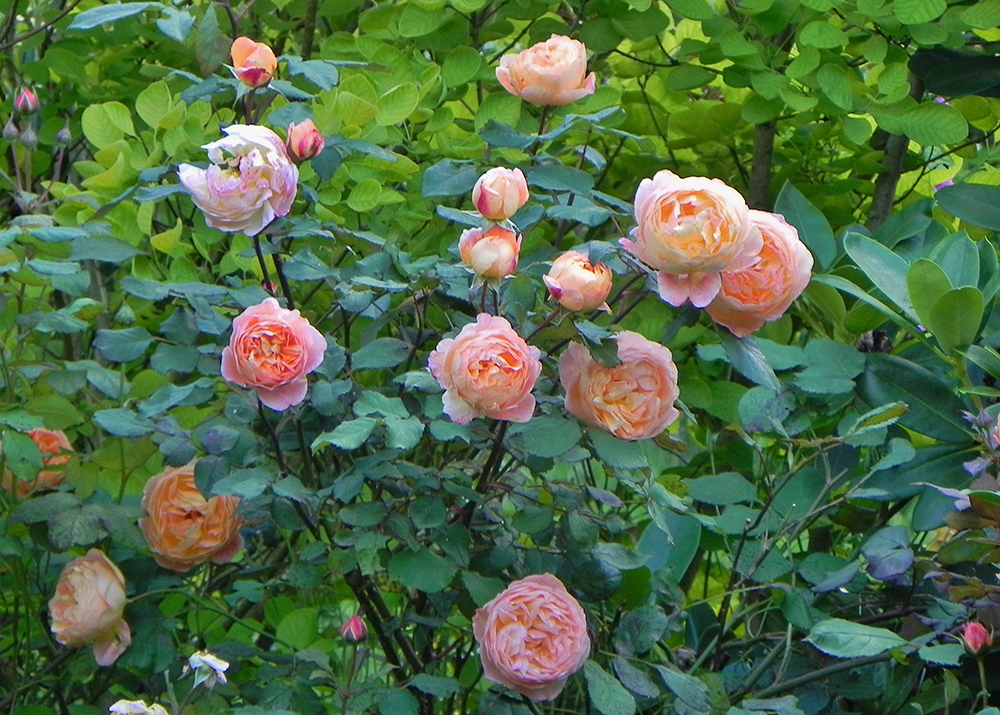
Although container grown roses can be planted at any time of year, many roses are planted bare root from late autumn right through to early spring. This is the traditional time for planting; after the leaves have fallen and growth has come to a standstill in the colder months. Without foliage and flowers to support the plants can be lifted from the field, despatched and then planted in the garden where they had time to establish roots before growth starts in spring.
If you buy roses by mail order they will almost certainly arrive as bare root plants. If you buy from a garden centre the plants may be in pots, but they will only have been recently containerised, so few new roots will have developed in the pot. Whether you are planting bare root roses, or containerised plants it is really important to give them the best possible start to ensure healthy, vigorous growth and plenty of blooms next season. They can deliver a fantastic display of gorgeous fragrant roses in just a few months if you plant them properly.
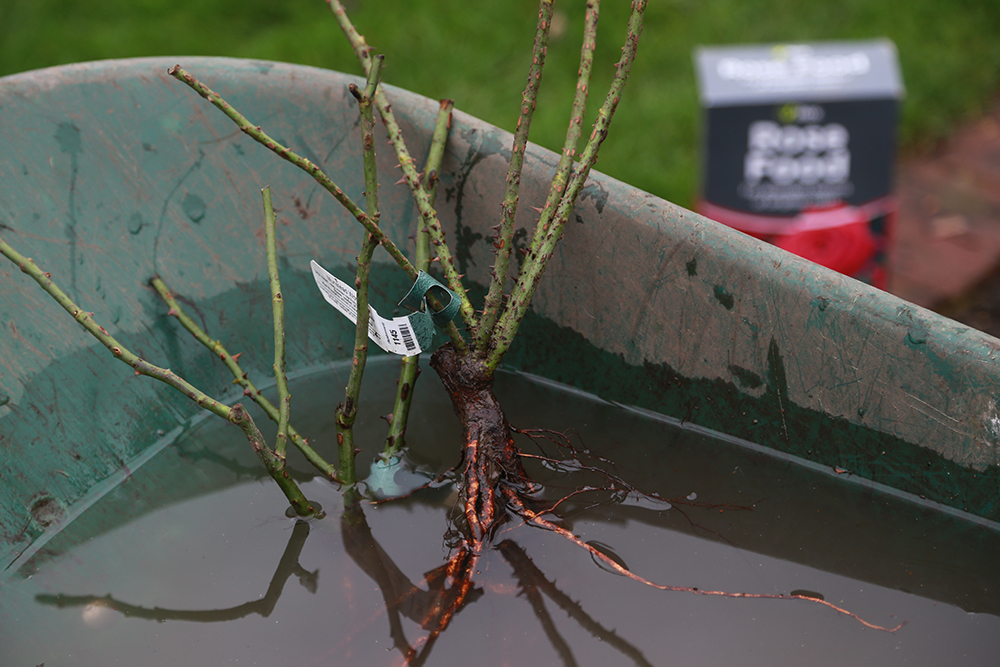
Planting bare root roses
Whether you buy your roses from a nursery or garden centre, or they are delivered to you it is really important to treat them well until you are ready to plant. Unpack them immediately and “lay them in”. This means digging a rough hole and covering the roots with soil, or put them in a large pot and cover the roots with damp compost. Keep them outside in the open, never in the greenhouse or indoors.
Plant as soon as possible, but before you plant soak the roots in water for a couple of hours in a bucket or wheelbarrow of water, this helps to stimulate the production of new roots.
Prepare the ground well, removing any weeds. Fork over the soil thoroughly and condition it by adding plenty of good garden compost or well-rotted manure. Roses like rich soil.
Dig a planting hole that is wide enough and deep enough to allow the roots to spread out, without the need to bend them excessively. When planted, the bud union, in other words where the branches start, should be just below the surface of the soil. Opinion on this has changed over the years; we used to plant with this above ground, but experience has shown that results are better if it is buried.
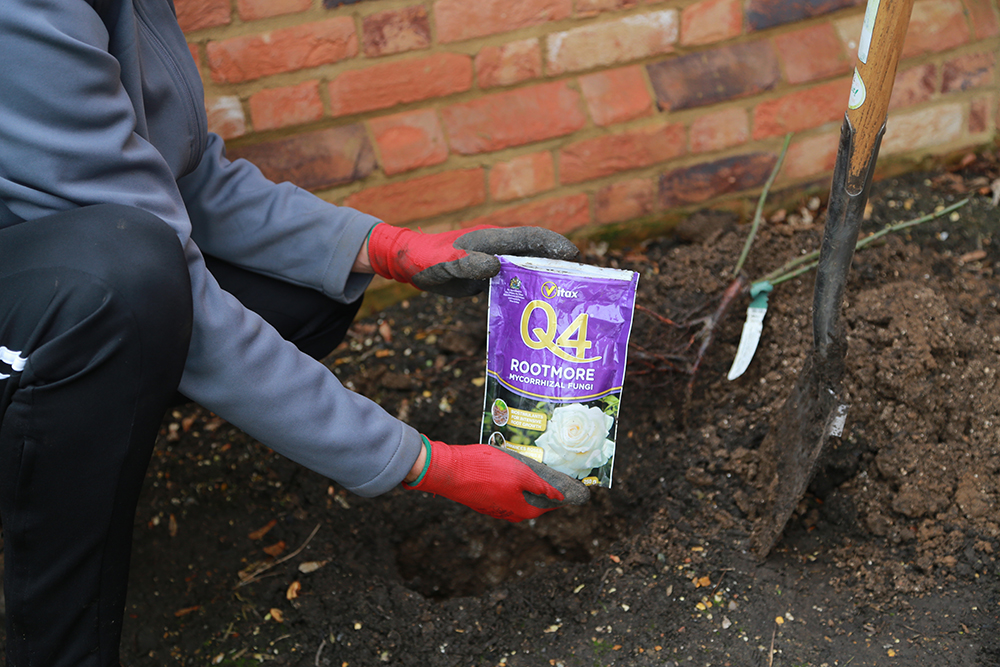
The magic ingredients
Now sprinkle about a dessertspoonful of Vitax Rootmore across the bottom of the planting hole. Rootmore is a preparation of mycorrhizal fungi which will develop and grow in association with the roots, aiding establishment and the absorption of water and nutrients. Most plants grow in association with microscopic fungi in the soil; this is a way of establishing that association quickly.
Now add a generous handful of Vitax Rose food to the soil you will use to backfill the planting hole, mix it into the soil and backfill around the roots, firming as you go. Try to leave a saucer shaped depression around the plant to direct water to the roots and water in thoroughly, even if it is raining. Watering at this stage is more to settle soil particles around the roots, rather than because the plant needs it.
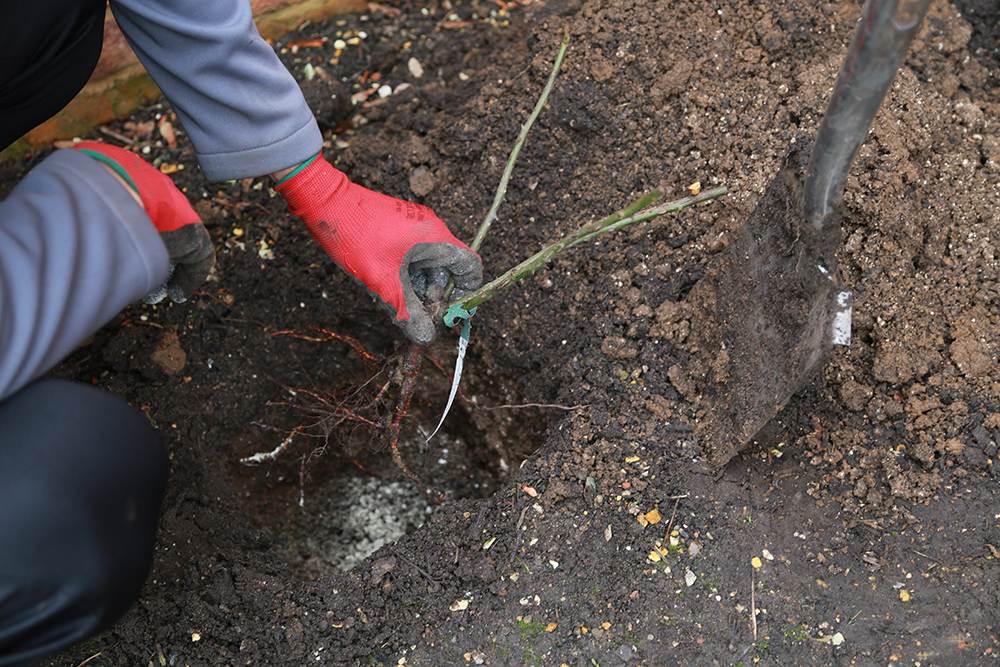
Planting container roses
The procedure for planting container roses is exactly the same as for bare root, except that you try and keep the rootball of the plant intact. It is most important to water the pot thoroughly before planting, this helps to keep the compost in place.
However roses have a wiry tap root system which does not readily make a rootball. Therefore, as the plant has most probably been recently containerised, the compost is likely to fall away. This is not a problem, so do not panic. Go ahead and plant firmly.
Overcoming rose sickness or replant disease
A new rose is notoriously difficult to establish in a situation where another rose has died or been removed. This is known as rose sickness or replant disease; the cause is something of a mystery. However, it is thought to be associated with the relationship of the rose with mycorrhizal fungi. Adding Vitax Rootmore to the planting hole when planting will overcome rose replant disease, enabling a new rose to be planted where another has failed.
Planting climbing roses
Most climbing roses are tall growing forms of bush roses. They are less vigorous than rambler roses, and are ideal to grow against walls and fences. They are planted in the same way as bush roses, but it is really important not to plant too close to the supporting wall or fence. Plant at least 45cm away and direct the stems towards the support. Walls and fences cast a rain shadow and house walls are often overhung by the eaves, meaning that the ground beneath is dry and inhospitable. Roses need water for healthy growth and results will be poor if planted too close.

Aftercare
All newly planted roses need a little extra care during the first growing season. Water regularly if the weather is dry and watch out for aphids on the new growth. If they appear treat with Vitax Organic Rose Guard which also helps to protect against fungal disease. If you planted in autumn or winter re-apply Vitax Rose Food in mid spring and again in mid-summer after the first flush of flowers. Regular feeding with a rose fertiliser promotes strong growth that is more resistant to disease.
Andy McIndoe
For Vitax
Your login details have been used by another user or machine. Login details can only be used once at any one time so you have therefore automatically been logged out. Please contact your sites administrator if you believe this other user or machine has unauthorised access.






